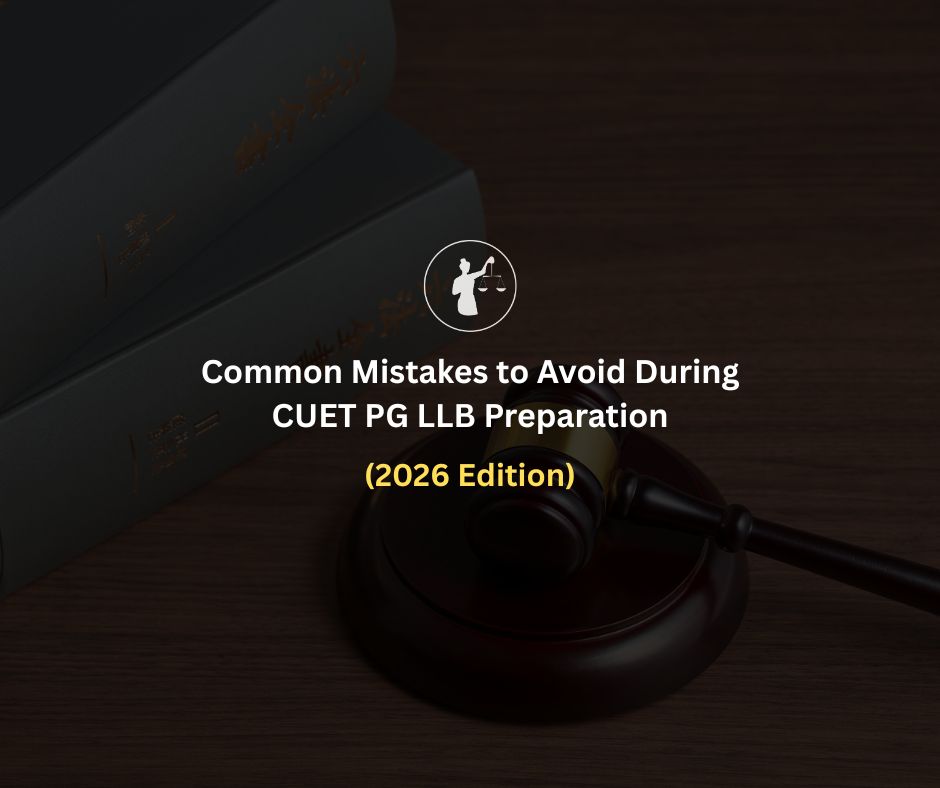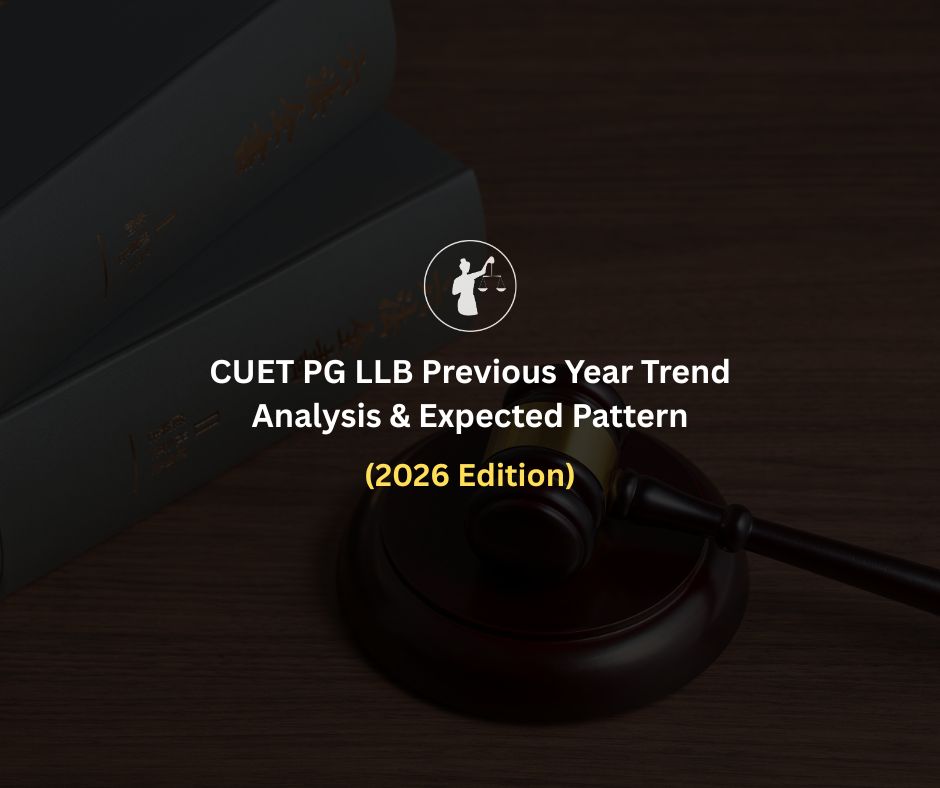
CUET PG DU LLB ONLINE COACHING
The CUET PG DU LLB 2026, conducted by the National Testing Agency (NTA) under Paper Code: COQP11, is your gateway to Delhi University's prestigious 3-Year LL.B. program.
Given the limited number of seats and rising competition, mock test performance is often the difference between selection and rejection.
Why Mock Tests Matter in CUET PG DU LLB 2026 Preparation
Mock tests are more than just practice—they are simulation-based training. They help build:
Speed and accuracy under time pressure
Exam-day mental stamina
Sectional pacing (especially for Logical + Quant)
Confidence in high-stakes environments
But many aspirants sabotage their scores by making preventable errors in their mock test approach.
Read More :CUET PG DU LLB 2026 Exam Overview and Key Information
Why it’s a mistake: Attempting full mocks before mastering subject fundamentals leads to poor performance, anxiety, and loss of motivation. It gives a false sense of unpreparedness.
Better approach: Spend the first two months strengthening your foundation. Focus on topic-wise MCQs, editorials for comprehension, and maintaining GK notes. Begin full-length mocks only in the third month when your conceptual clarity is strong enough to apply under pressure.
Why it’s a mistake: Failing to assign time limits for each section results in time overruns, leaving some questions untouched. In a high-stakes test like CUET PG DU LLB, every unanswered question can cost you admission.
Better approach: Train with a fixed section-wise time plan:
English: 20–25 minutes
GK + Computer: 15–20 minutes
Logical Reasoning + Quant: 40–45 minutes
Review: 10–15 minutes
Practice transitioning between sections using a timer so that your brain adapts to the time pressure.
Why it’s a mistake: Without post-mock analysis, you're likely to repeat the same errors. Reviewing only the score without diving into the "why" behind wrong answers limits improvement.
Better approach: Analyze every mock thoroughly. Identify error patterns—did you misread, lack knowledge, or rush under pressure? Reattempt the wrong questions, tag them by error type, and revise concepts accordingly.
Why it’s a mistake: You cannot improve what you don’t measure. Without tracking scores, time taken per section, and types of mistakes, your prep becomes directionless.
Better approach: Maintain a logbook or spreadsheet that includes:
Mock number and date
Sectional scores and total score
Accuracy rate
Time spent per section
Observations and next steps
This log becomes your personal roadmap for improvement.
Why it’s a mistake: Practicing with mobile phones, breaks, or in noisy environments builds false confidence. You might score well in practice but underperform in the actual exam due to unfamiliar test-day conditions.
Better approach: Always attempt mocks:
On a desktop or laptop
In a quiet, distraction-free space
With a strict 105-minute timer
At the same time slot as your actual exam
Replicating the pressure and physical conditions of test day builds mental and physical endurance.
Why it’s a mistake: Quantity does not guarantee quality. Taking 20 mocks without learning from them simply reinforces bad habits and false confidence.
Better approach: After each mock, spend double the time on review. For a 105-minute test, devote 2.5 to 3 hours to post-mock analysis. Note key insights, revise weak areas, and revisit concepts that led to errors.
Why it’s a mistake: Repeating errors due to lack of revision is a common trap. If you don’t revisit incorrect topics, the same questions will trip you up again.
Better approach: Build a "Mistake Bank" and revise it weekly. For every factual or conceptual mistake:
Make flashcards
Revisit textbook/theory
Practice similar questions
Schedule error revision slots
Systematic revision ensures stronger retention and avoids careless repetition.
Why it’s a mistake: Solving without time pressure gives an illusion of mastery. On the actual test day, lack of pacing will lead to panic and rushed guesses.
Better approach: Do short drills of 25 MCQs in 25 minutes across sections. This builds raw speed and trains your brain for real-time accuracy. It's especially helpful for Logical Reasoning and Quant sections, where time compression is highest.
Read More : 6-Month CUET PG DU LLB 2026 Preparation Plan (COQP11)
No breaks. Same exam time. Same device type. No pausing the timer.
Train your brain for each section’s switch using fixed timers.
List every error and review it weekly to avoid repeats.
Ensure you've actually understood the concept, not just memorized the answer.
Reviewing your strategy with peers on platforms like NLTI, Edugorilla, or even study groups can give new insights.
Q1. How many mock tests should I take before CUET PG DU LLB 2026?
Aim for at least 10–12 full-length mocks. But more important than the number is the quality of your analysis and your improvement cycle after each one.
Q2. When should I start full mock tests in my preparation?
Start full mocks from Month 4 onward, once your subject basics are in place. Begin with one per week, then scale up to 2–3 in the final month.
Q3. How do I analyze my CUET PG mock test effectively?
Break it down by:
Sectional score
Accuracy vs. guesswork
Conceptual errors vs. time errors
Topics to revise
Maintain a mock analysis notebook or tracker to observe trends.
Q4. What is a good score in CUET PG DU LLB mocks?
Based on past trends:
General: 260+
OBC/EWS: 225–245
SC/ST: 190–210
Aim to be at least 10–15 marks above the expected cutoff for your category.
Q5. Should I revise my mocks or focus only on practicing more?
You must revise each mock before moving to the next. Raw practice without revision results in repeating old mistakes.
The right mock test strategy can unlock your highest score potential in the CUET PG DU LLB 2026 (COQP11).
Avoiding these common mistakes means you don’t just study hard—you study smart.
Simulate the real test Review each mock with surgical precision Focus your revision on mock-driven insights
By refining your mock test game, you’ll not only improve faster—you’ll also walk into the actual exam with confidence and control.





